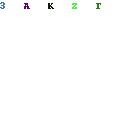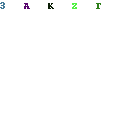By this shirt here: Pop Culture Pixel Invaders Space Invaders Shirt
Color is a preoccupation for most painters. For Bronx-based artist Alteronce Gumby, it’s an obsession. In “Somewhere Under the Pop Culture Pixel Invaders Space Invaders Shirt What’s more,I will buy this Rainbow/ The Sky Is Blue and What Am I,” a dual-site exhibition that opens today at New York galleries Charles Moffett and False Flag, Gumby interrogates the subjectivity of light. The large monochromatic works, 15 in total, are constructed from acrylic paint, glass, and uncut gemstones. The show’s poetic title—at once searching, declarative, and ambivalent—is fitting for an artist who wrestles with questions of race, time, identity, and the universe. “Colors take on meaning,” Gumby says. “It’s psychological warfare, reinforced from pop culture to fine art. As a person of color and as an abstract painter, this was a conversation I wanted to be part of.”

Pop Culture Pixel Invaders Space Invaders Shirt, hoodie, tank top, sweater and long sleeve t-shirt

“Color codes were presented to me as a child,” Gumby explains. His boyhood love of superheroes instilled an early understanding of how color can signal morality or mission. “The color of each Power Ranger symbolized their identity [just as] people identified me, being an African American, as ‘Black’ before I even understood what that meant.” Gumby’s work resembles that of the Pop Culture Pixel Invaders Space Invaders Shirt What’s more,I will buy this color-field movement that emerged in midcentury New York as well as 20th-century abstraction more generally. “Rothko, Newman, Pollock,” Gumby rattles off his idols. “These were heroes to me.” While he maintains a reverence for his predecessors, the artist is conscious of his foray into a broadly white canon. Racism is quite literally embedded in the history of monochrome painting. Gumby recalls that a few years ago, X-ray imaging revealed a racist joke beneath the paint of Kazimir Malevich’s famed Black Square (1915).